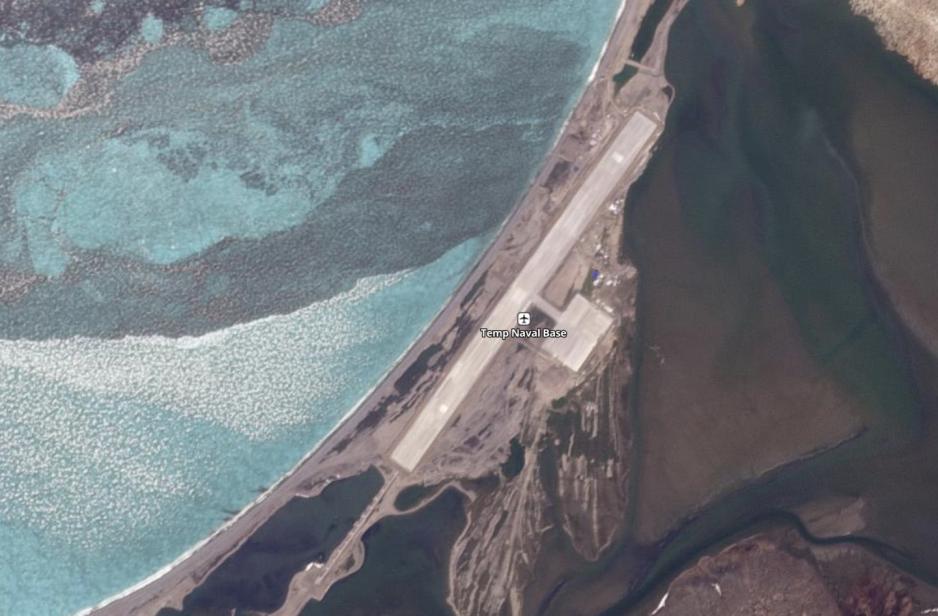Russia Upgrades Key Arctic Military Base With Expanded Runway

Temp Air Base on Kotelny Island featuring an expanded and paved runway in a July 15, 2024 satellite image. (Source: Planet.com)
Russia upgrades the runway at one of its main Arctic military bases. The newly paved and lengthened runway is part of a systemic upgrade of infrastructure in the region.
Even with its military focused on the invasion of Ukraine, Russia continues to refurbish and expand its military infrastructure in the Arctic region.
Its latest efforts come in the shape of a newly expanded and paved runway at the Temp Air Base at the western shore of Kotelny Island, part of the New Siberian Islands. The runway joins an existing military base located a few kilometers inland. The Severny Klever station, also known as Northern Trefoil due to its distinct cloverleaf shape, opened to much publicity in 2013.
“Russia understands that its main western adversaries still maintain overall superiority in the aerospace and subsurface maritime domains of the Arctic, but Moscow can still compete – conventionally and otherwise,” explains Dr. Troy Bouffard, Director of the Center for Arctic Security and Resilience at the University of Alaska Fairbanks.
Continuously upgrading infrastructure
Over the past two summers, satellite images had shown continuous work on the runway throughout 2022 and 2023. Latest images from mid-July 2024 show its completion including an adjacent apron and an approach lighting system.

Temp Air Base runway unfinished during summer 2023. (Source: Planet.com)
The 2,100 meter-long and 130 meter-wide runway is capable of receiving all but the largest types of Russian military and civilian aircraft, including long-range interceptors and nuclear-capable bombers.
“Infrastructure remains the foundation for developing operational capabilities, especially sustained. Russia’s new airfield will add significant operational options for defense and force projection, and will improve Russia's ability to project air power in the Arctic region, including the ability to mobilize and deploy fighter jets, bombers, and reconnaissance aircraft more easily and rapidly,” Bouffard further expands.
Bases located throughout Russian Arctic
Temp Air base covers the central section of the Russian Arctic and the country’s Northern Sea Route, an emerging shipping lane, passes within proximity of the airfield.
The base is home to radar units, the Pantsir-SA short range SAM system and a Bastion-P coastal defense system. The Sopka-2 radar facilities serve as aerial awareness for the second division of the Northern Fleet air defense, though the recent restructuring of Russian military districts may have reorganized responsibilities. The Northern Trefoil garrisons have also been equipped with a long-range S-300 SAM system, slated for upgrades to S-400.

Map showing four major Russian Arctic bases along the Northern Sea Route in relation to Svalbard and Bodø. (Source: Author’s own work)
The upgrades mirror development at other Arctic bases, including Rogachevo on the island of Novaya Zemlya and Nagurskoye on Franz Josef Land.
“These Arctic islands also offer Russia a distinct advantage towards training and experience, where deploying, conducting, and sustaining operations are exponentially more difficult than mainland and coastal alternatives,” concludes Bouffard.
U.S. falling further behind
Operating in the Arctic can be challenging, especially when limited assets begin to fail and replacements experience delays. The U.S. Coast Guard has attempted to procure replacements for its aging icebreakers for the past decade with upgrades delayed until at least 2030.
The Coast Guard’s annual Arctic patrol was cut short in July when icebreaker Healy experienced a mission-ending fire in the engineering compartment damaging key engine components. The vessel is returning to its home port of Seattle on a single engine leaving the U.S. without Arctic surface vessel presence for the remainder of the summer and fall season.

